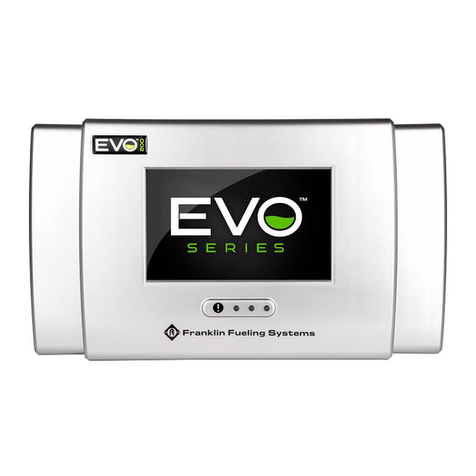
3
Operating precautions
Franklin Fueling Systems (FFS) equipment is designed to be installed in areas where volale
liquids such as gasoline and diesel fuel are present. Working in such a hazardous environment
presents a risk of severe injury or death if you do not follow standard industry pracces and the
instrucons in this manual. Before you work with or install the equipment covered in this manual,
or any related equipment, read this enre manual, parcularly the following precauons:
IMPORTANT: When you move the drop tube inside the tank riser pipe, do so slowly and carefully
to help prevent the drop tube from impacng the riser pipe.
IMPORTANT: To help prevent spillage from an underground storage tank, make sure the delivery
equipment is well-maintained, that there is a proper connecon, and that the ll adaptor is ght.
Delivery personnel should inspect delivery elbows and hoses for damage and missing parts.
CAUTION: Use only original FFS parts. Substung non-FFS parts could cause the device to
fail, which could create a hazardous condion and/or harm the environment.
WARNING: Follow all codes that govern how you install and service this product and the
enre system. Always lock out and tag electrical circuit breakers while installing or servicing
this equipment and related equipment. A potenally lethal electrical shock hazard and the
possibility of an explosion or re from a spark can result if the electrical circuit breakers are
accidentally turned on while you are installing or servicing this product. Refer to this manual (and
documentaon for related equipment) for complete installaon and safety informaon.
WARNING: Before you enter a containment sump, check for the presence of hydrocarbon
vapors. Inhaling these vapors can make you dizzy or unconscious, and if ignited, they can explode
and cause serious injury or death. Containment sumps are designed to trap hazardous liquid
spills and prevent environmental contaminaon, so they can accumulate dangerous amounts
of hydrocarbon vapors. Check the atmosphere in the sump regularly while you are working in
it. If vapors reach unsafe levels, exit the sump and venlate it with fresh air before you resume
working. Always have another person standing by for assistance.
WARNING: Follow all federal, state, and local laws governing the installaon of this product
and its associated systems. When no other regulaons apply, follow NFPA codes 30, 30A, and 70
from the Naonal Fire Protecon Associaon. Failure to follow these codes could result in severe
injury, death, serious property damage, and/or environmental contaminaon.
WARNING: Always secure the work area from moving vehicles. The equipment in this manual
is usually mounted underground, so reduced visibility puts service personnel working on it in
danger from moving vehicles that enter the work area. To help prevent this safety hazard, secure
the area by using a service truck (or some other vehicle) to block access to the work area.
WARNING: Discharge stac electricity from the splice kit to ground before you install it, and
make sure it is properly grounded while in service.
DANGER: Make sure you check the installaon locaon for potenal ignion sources such as
ames, sparks, radio waves, ionizing radiaon, and ultrasound sonic waves. If you idenfy any
potenal ignion sources, you must make sure safety measure are implemented.





























